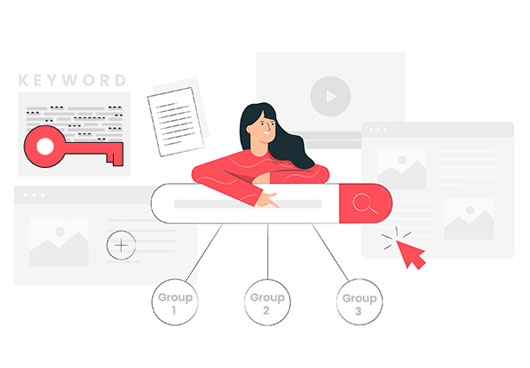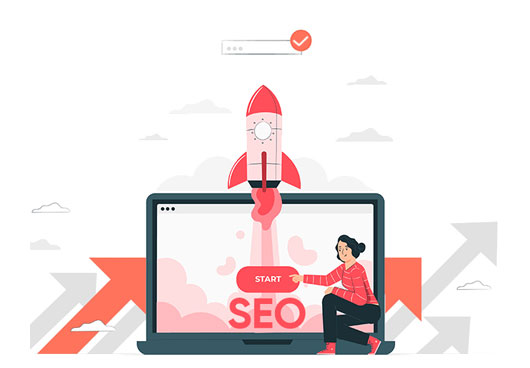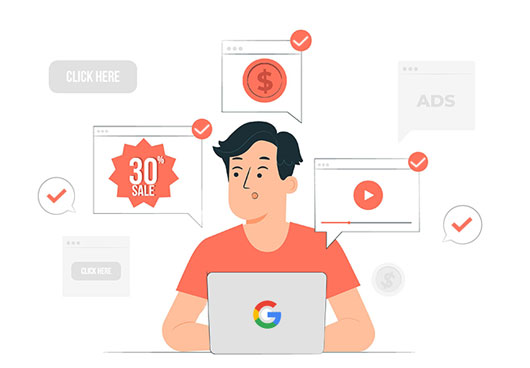How to Prevent Paid Traffic from Dropping Off Your Website
Contributors:
Amol Ghemud
Published: August 14, 2018

It is likely to happen to every marketer out there – traffic dropping off, when you sign onto Google Analytics and see a surprising, and detectable, decrease in traffic.
Need to analyze the reason for your traffic drop? Read on and recover your web activity on track.
1. Wrong Ad text
The most relevant text, the text you want to have Ad to target,is a very important factor leading to traffic drop off.
Don’t sell mangoes showing apples
Ad text is an essential part of leading vistors to your page for conversion. By the same token, you need to strike a healthy balance between ad text relevance and authenticity, engaging writing.
If you rework on your ad copy without hitting the same notes as before, it could mess with your traffic.
2. Highlight what makes you unique
Free shipping? Dazzling variety? Tell people! Showcase the products, services, or offers that make you competitive.
3. Include prices, promotions, and exclusives
People often use Google search to make a decision about something. Give them what they need to decide. If you have a limited-time discount or stock an exclusive product, say so.
4. Empower customers to take action
Are you selling something? Tell people what they can buy. Are you offering a service? Tell people how to contact you. Calls to action like purchase, call today, order, browse, sign up, or get a quote make clear what the next steps are.
5. Include at least one of your keywords
Keywords in your ad text show your ad’s relevance to what people want. For example, if you’ve included digital cameras as a keyword, your ad headline could be “Buy Digital Cameras.”
6. Match your ad to your landing page
Have a look at the page that you’re linking to from your ad (the landing page), and make sure that the promotions or products in your ad are included there. People might leave your website if they don’t find what they expect.
7. Conversion ratios analytics
A site’s conversion rate is defined as the number of successful transactions divided by the number of total unique visitors.
Any webmaster can measure the conversion rate of their website using Google Analytics. This comprises an advanced use of Google Analytics, and is not common to the majority of Google Analytics users.
Having a goal gives context to your actual number, asking your business decision makers forces them to think about where the revenue (or other outcomes) will come from causing them to really analyze their execution strategies and try to plan them ahead of time as much as possible.
You can compare relative volumes of traffic from different sources within the same dimension: for example, the traffic from different search engines, campaigns, or mediums. Overall comparisons let you make some initial determinations about which channels are most effective or offer the best return.
For example, if one campaign is delivering a lot more traffic than another, you can shift resources to make the more successful campaign even more visible. Or if one medium, like email or cpc, is outperforming the others, you can invest more heavily in that medium.
8. On site drop off
Whether it’s a technical issue, a recent website change, a Google algorithm update or poor optimization, there are many possible reasons why traffic to your website has been declining.
There is no set number, but consider common sense when determining if too many visitors are leaving the page. A small percentage is an inevitable, but if a large percentage is dropping off, the content or pages should be rearranged to make important information more prominent and more visible.
9. Targeting audience
Before you start any paid campaign it’s important you put together a set of audience of who you are marketing to.
Put together a range of questions to identify your target market :
- What type of device will be used?
- User’s age range?
- What is user’s gender?
- Their interests categories?
- What is their motivation to buy?
- Where are they in their buyer journey?
- What is their lifetime value?
- When are they active online?
- Their geographic location?
- What sites will they visit?
Once you have put together a marketing profile you can start to target users effectively by using the range of features your paid platform gives.
10. Determine stages where visitors drop off
Depending on the purpose of your site, you may want to know how many pages users traversed after the initial page.
In addition to measuring the level of engagement, you can also see the extent to which traffic diminished as users progressed through your site.
If users aren’t progressing as far as you had hoped, or if traffic is dropping off at a faster rate than you’d like, you can consider redesigning your site navigation or graphic design to allow for easier movement between pages, adding additional calls to action, like teasers for related articles or products, or reworking your site content to better address the interests of your audience.
Think about it this way–people can leave your website in one of two ways. One, they exit from a specific page, which becomes the “exit rate” from that page. When people “drop off,” they are dropping out of a funnel.
They click back, maybe go back to the previous page, etc. But then they go on to other pages on the site. “Drop off,” simply put, is the percentage of people who may not do what you want them to do on the site, but they do remain on your website and exit elsewhere.
User flow
Are there paths through your site that are more popular than others, and if so, are those the paths you want traffic to follow? You may have a path in mind for your users like
Home Page > Services Page > Contact Us > Thank You!
but you may uncover a more popular path like
Home > Services> Search > Search Results > Search > Search Results > exit.
That unexpected path can indicate things like users not finding products they want, or your internal search not returning results that are helpful.
You might also discover something like an unusually high drop-off from a new page you’ve introduced, like a new home page or new product page. Investigate whether the design of the new page might be obscuring the links or controls that lets traffic flow to the pages you want them to see next.
No. of clicks
Clicks represent the actual number of clicks that you paid for and the number of clicks your campaign ad actually received.
It is normal for click and visit numbers to vary, as visitors sometimes click on ads in their first session and then re-visit the site in later sessions from other sources – e.g. directly by typing the address into their browser, resulting in 1 click and several visits, as the referral data from the original visit was retained.
If the situation is reversed, and you have fewer visits than you have clicks, there may well be a tracking issue involved, i.e. Analytics tracking code may not be added to every page on your website.
Page load time
If pages aren’t loading, ain’t nobody converting.
Yes, your headline is important. The value prop needs to be clear. A beautiful page is nice to have. Social proof critical to adding credibility.
But if fast loading times aren’t happening, then landing page conversions aren’t either.
- Clean up your code
- Minimise HTML & CSS
- Minimize redirects
- Limit WordPress plugins
- Upgrade hosting
- Compress images
Single page checkout
Single-page checkout is faster and easier so that more customers convert.
Single-page checkout forms, particularly those that use JavaScript to march shoppers through the process, also provide better step-by-step visibility. Shoppers know what they must do and where they are in the process.
Doorway pages
Doorways are sites or pages created to rank highly for specific search queries. They are bad for users because they can lead to multiple similar pages in user search results, where each result ends up taking the user to essentially the same destination. They can also lead users to intermediate pages that are not as useful as the final destination.
Here are some examples of doorways:
- Having multiple domain names or pages targeted at specific regions or cities that funnel users to one page
- Pages generated to funnel visitors into the actual usable or relevant portion of your site(s)
- Substantially similar pages that are closer to search results than a clearly defined, browsable hierarchy
Call To Action
Just as important as your headline is your CTA. Ensure you are clear and direct about the desired outcome. What is it that you want your visitors to do? The copy and design of your CTA can make a big difference to your conversions.
If you have a text link CTA, consider using a button to make it stand out more. Creating a sense of urgency in your copy will also go a long way.
Sign up for a free Business Growth Consultation
Create attention grabbing landing page
Focus on creating insanely compelling landing pages. If not you’re wasting your traffic.
Understand your web visitors. Create action-oriented, standalone web pages to move people through every stage of the buyer’s journey.
Conclusion
In the end you have to practice. And test. evaluate And test more.
Keep Learning and Keep implementing.
About the Author
Optimizer in Chief
Amol has helped catalyse business growth with his strategic & data-driven methodologies. With a decade of experience in the field of marketing, he has donned multiple hats, from channel optimization, data analytics and creative brand positioning to growth engineering and sales.
 Growth Strategy and Planning
Growth Strategy and Planning Inbound Growth
Inbound Growth Growth Hacking
Growth Hacking Search Engine Optimization
Search Engine Optimization Paid and Performance Marketing
Paid and Performance Marketing Social Media Marketing
Social Media Marketing AI-Driven Growth Strategy
AI-Driven Growth Strategy AI-Native Workflow Automation
AI-Native Workflow Automation Generative Engine Optimization
Generative Engine Optimization
 Tools
Tools Growth Tools
Growth Tools Offers
Offers Quizzes
Quizzes Insights
Insights






















Leave a Reply